When I wrote about poster hoardings and their rather surprising effects last week, the comments section ended up as a bit of a debate on how posters survive. Were the few that remain only saved because the designers and a few other far-sighted people connected with their production and display collected them (the Malcolm Guest model)? Or were there more which were sold on to the public of the time as well?
I promised to go away and try and find out as much as I could and report back. There’s lots more research that can be done, so this is very much a work in progress. But by asking the questions here, I’m hoping that I might get some answers from you as well. So please do pile in if you can help.
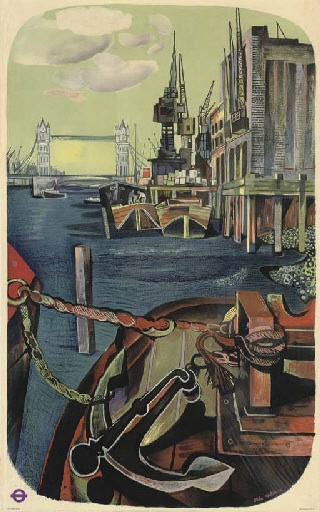
John Minton, London’s River, 1951
What strikes me is that some kinds of posters survive in disproportionate quantities. Any auction, or even a look at eBay will show you a lot of London Transport posters or railway posters, with lesser amounts of Shell and Guinness items too. But very little British commercial advertising survives at all – you can go through swathes of auction catalogues without seeing any for months or even years.
The same is true of GPO posters – which are examples of great design but nonetheless come up very rarely. (To give you an idea of how rarely, Christies catalogue archive can turn up only 10 or so GPO posters which have come up for sale. Put in “shell poster” and you get hundreds of results. I daren’t even type in railway poster.)
So my suggestion would be that the kinds of posters which survive in numbers were also sold on to the public one way or another.
There is no dispute that this is what London Transport did (as mentioned on here before). Here’s Oliver Green of the London Transport Museum on the sales pattern in the 1920s:
A typical print run in the 1920s was 1,000, of which 850 were required for posting on the system where they were displayed for one month. The remaining 150 copies were available for purchase at the company’s head office for between about two and five shillings, depending on the printing cost. Posters in demand with the public were invariably those which followed the more traditional artistic designs, such as Gregory Brown’s St Albans, Fred Taylor’s Kew and Dorothy Burroughes’ For the Zoo. These three were all in the top ten of a bestsellers’ list which was announced by the Underground in 1923.
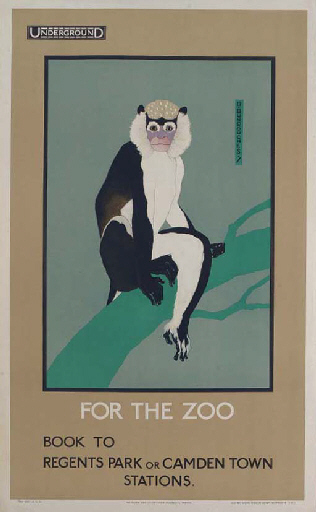
Dorothy Burroughes, 1922
By 1931 the best sellers were selling over 300 posters each, and London Transport were selling a total of 10,000 posters in a year. But even the modern art posters did sell to some.
Edward Bawden has also recalled that he and Eric Ravilious, when students together at the Royal College of Art in the 1920s. looked forward eagerly to the appearance of a new Kauffer Underground poster which was then, literally, one of the cheapest forms of good modern art available.
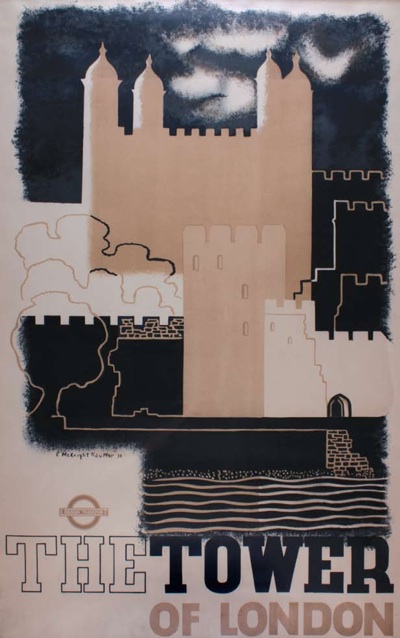
McKnight Kauffer, 1934
In 1933 the London Transport poster shop opened in their headquarters at 55, Broadway, and designs were, it seemed, commissioned specifically with shop sales in mind.
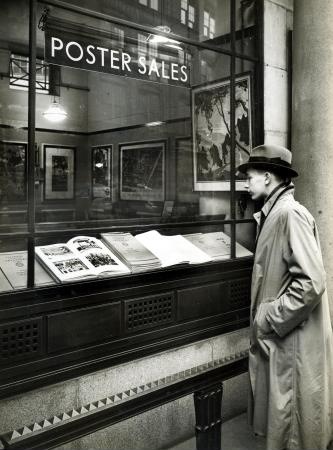
London Transport shop,c.1935.
Furthermore, some posters were also created so that they could be easily cut down for framing and display in the home.
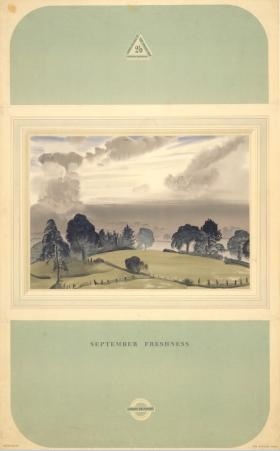
Laura Knight, September Freshness, 1937
Poster sales continued on and off, with a break for the war, sometimes only to schools and other educational establishments, sometimes to the public. Claire Dobbin writes about it in some detail in her essay in London Transport Posters if you want to know more.
She also mentions is that London Transport held poster exhibitions too, at Burlington House in 1928 and the Victoria and Albert Museum in 1949.
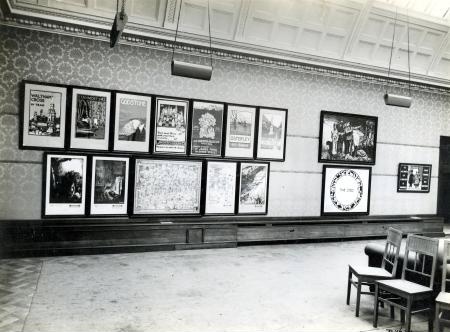
London Transport poster exhibition at Burlington House, 1928
For London Transport, these were infrequent special events, but in the case of the railway companies, exhibitions were a regular feature of their promotions. David Watts catalogues them in the essay I was referring to the other day.
Annual poster exhibitions were held at the LNER’s King’s Cross station in London between 1923 and 1927. Between 1928 and 1933, with the possible exception of 1931, they were held in either the New Burlington or Grieve’s galleries in the West End. In 1936 a private exhibition was held in Marylebone, presumably at the LNER station. In 1937 the exhibition reverted to the West End. LNER poster exhibitions were held annually in Edinburgh between 1924 and 1938. Their exact location is not stated, except for 1935, 1937 and 1938, when it was Waverley station. Numerous other localities hosted occasional LNER poster exhibitions, including: Aberdeen (1929–30, 1934), Barnard Castle (1934–36), Bournemouth (1934), Bradford (1934–35), Brighton (1936), Cleethorpes (1935), Dundee (1934), Gateshead (1936), Glasgow (1929–30), Grimsby (1934), Ipswich (1935), Kingston upon Hull (1932–36), Leeds (1934), Lincoln (1934, 1936), Manchester (1935–36), Newcastle upon Tyne (1930, 1934–36), Norwich (1933), Shef?eld (1933, 1936–37), Yarmouth (1934) and York (1932–36). […] It is likely that other localities also hosted exhibitions of LNER posters and that those listed above held them in more years than shown here. Exhibitions seem not to have been systematically recorded.
That’s quite a lot of exhibitions.
Now, I can’t lay my hands on any proof that posters were sold at these events. But posters were definitely sold by railway companies. Pre-war artists had contracts which paid them for every copy sold to the public, for a start.
And the LMS marketed posters to the public – possibly by the same system of writing in as London Transport used. When the company produced a series of posters designed by Royal Academicians in 1924, they “sold well”, and Maurice Greiffenhagan’s image of Carlisle was top of the pops, selling to the public “in large numbers”.
In 1931, the LMS even published a list of its six best-selling posters. Like the railways, traditional art was what the public wanted to buy, with Paul Henry’s views of Ireland taking the top two places.
So railway posters were definitely for sale. Which just leaves Shell and Guinness posters to account for.
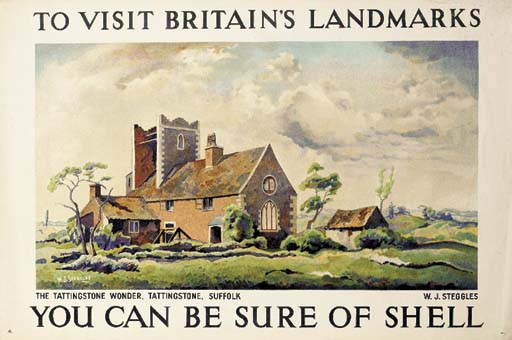
W Steggles
Shell held exhibitions of its advertising too. The first was at New Burlington Gardens in 1931 and then later they were held at Shell-Mex House and around the country. These were reviewed in the press and attracted thousands of visitors. And, yes, the posters were for sale. Michael Heller has reseached Shell’s inter-war corporate branding.
Its posters rapidly became collectors items, available by subscription from Shell or through its popular published catalogue collections.
Which just leaves Guinness posters, about which I can find out nothing right now. But I think I might be prepared to make a guess that they also were sold given that they survive in the numbers they do.
By way of a contrast, let’s go back to the GPO posters. We’ve got a fair number (in fact a rather embarrassing quantity), but what’s interesting is that I know the direct provenance of most of them. A few came from the Malcom Guest collection, a few more (all by her) from Daphne Padden’s estate. But the greatest number came from eBay, sold by a man whose uncle went to his local post office in the early 1950s and asked if he could have their posters when they’d finished with them. They’re not just floating about like the railway and London Transport posters, only thanks to rare and chance collections are they kept.

Tom Eckersley, 1955
Which makes me think that we’re very lucky that Shell, London Transport and the Railway Companies wanted to improve the nations taste by selling posters. Otherwise practically nothing would survive.
Sources
I haven’t given references in this, mainly because footnotes and blogs don’t mix well. But most of the information came from these books:
London Transport Posters: A Century of Art and Design
Underground Art: London Transport Posters, 1908 to the Present
Art for All: British Posters for Transport (Yale Center for British Art)
as well as from Michael Heller’s paper, Corporate Brand Building at Shell-Mex Ltd in the Interwar Period. Do ask if you want any more detail and I will do my best.
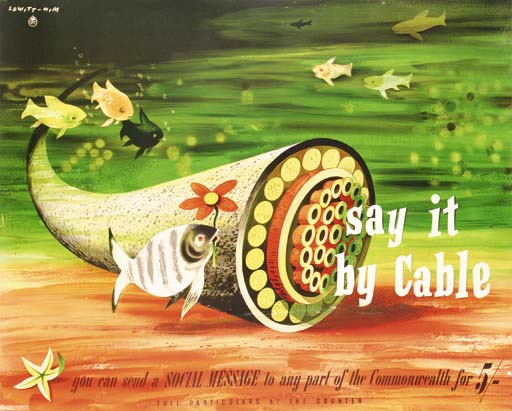
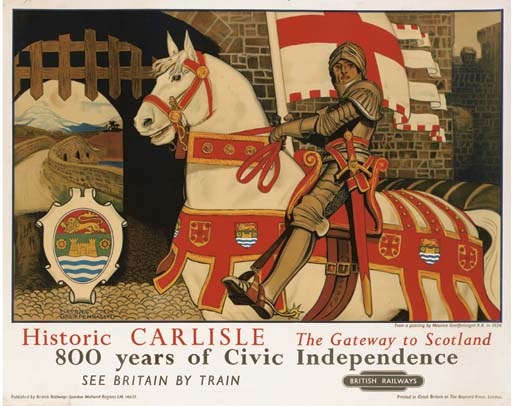
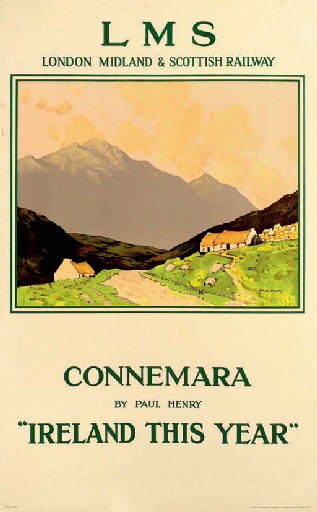

In the GWR section of Railway Posters 1923-47 there is a 1930s double royal advertising poster sales by application to the superintendant of the line at Paddington. Prices seem very reasonable…now; 2/6 for a dr and 5/- for a qr. I think that would have been quite pricey then though.
Morning
I guess the survival of posters depends on a combination of factors. Some are saved, some are purchased.
The Guest sale was interesting because it showed that most of what we’ve seen on the market, in terms of railway posters, is what was around in the 1960s and 1970s to be saved. I guess there was a store somewhere which got cleaned out by the railway collectors in the 1960s and 70s who wanted anything to do with steam.
There is much less about in Britain than in, say, France or Germany or Switzerland…
Really interesting stuff, now we just need some nice images of the posters in domestic interiors of the period and I’ll be happy.
MM – yes indeed, that will teach me to skim books.
Paul – yes, I agree. As the GPO posters that we have show, there really were people collecting them even at the time.
Shelf Appeal – funnily enough there is a photo about of a cut-down McKnight Kauffer in a Heals furniture display in about 1921. But the post took so long to write that I lost the will to scan it. I will try and rectify that one of these days!
Very interesting blog!
In the 1950s and early 60s, the British Railways Scottish Region commercial department in Glasgow sold current railway pictorial posters. I am told that it was “hit or miss” what was available at the time. When the classic “Glasgow Electric” poster of a Blue Train by Terence Cuneo was published in 1960, quad royal copies were widely available for sale in the main Glasgow stations and I am told sold well.
Thank you very much – and thanks also for the additional information. Quite apart from anything else, it does explain just why there are so many Cuneos about…
If I’d known there was interest in cut-down & framed posters in-situ, I’d have taken pictures of my parents bedroom before we started clearing the house.
They had trimmed and framed copies of the GPO “Use Your Correct Address” posters of Eilean Donan (John Minton) and Brookland (David Knight) on the wall for at least the last decade. We’ve also found a trimmed copy of Minton’s Iwerne Abbey, a trimmed and framed Minton Greenwich which I vaguely remember being on the walls in the 60s & 70s, and what we think is a trimmed David Knight Polruan.
Dad seems to have got the Minton posters in April 1957 by writing to the Mount Pleasant offices. The three cost 3s 0d in total (1/6d for Iwerne, 1s for Greenwich and 6d for Eilean Donan) and were sent out with a note from a Mr R. Weeber giving the prices and the rather polite request “Perhaps you will kindly forward a remittance for 3s.0d. in due course.”
Mr Weeber noted that there where no other pictoral posters available, that the GPO was unable to give anyone a list of what posters were available, and that thier current posters were displayed at larger post offices.
In 1967, dad tried to order the Post Office Savings Bank ‘Fulmer, Slough’ poster from the PR department at St Martin’s-le-Grand. Miss S Scott pointed out that the GPO didn’t handle Savings Bank posters, but enclosed “a combined list and order form for sale copies of our “Correct Address” series”. So in the ten years between the two orders, the GPO had gone from having no lists at all to being able to send out order forms. There’s progress. We don’t have the order form, but there’s another note giving the prices for the David Knight series: Polruan or St. David’s Cathedral 3/6d, Brookland 6d.
Thank you so much for that – it is really useful to know. I had no idea that the GPO also sold their posters, let alone that they developed enough of a system to have an order form.
It turns out that I do actually have an order form for GPO “Correct Addressing” posters. Unhelpfully, it’s not dated, and it’s basically a roneo/photocpy of a typed sheet of foolscap. The price of the posters has gone up to 10 shillings each, including Purchase Tax and p&p, so I’m guessing it’s after 1967 when they were 3/6d each. It’s rather dissappointing as there’s a total of eight posters (one a handwritten recent addition) on offer.
Maybe the low survival rate of GPO posters is down to most people not knowing that there were actually posters for sale? The first note to my dad from the GPO seems to indicate that they prefered to sell the posters in larger post offices. There’s a sales area for postcards, presentation packs of stamps &c in the central Manchester post office, but you wouldn’t notice it was there if you weren’t looking for it. If the GPO didn’t advertise their posters for sale outside the post office and just relied on people buying posters by accident when they’d gone to buy stamps, sales might be a little low…
Again, that’s so interesting to hear – and I’d love to see a photo of the order form if you could do that?
I agree, I don’t think that this was widely advertised. The Postal Museum and Archive are going to look into it and see what they have on the subject, so I might post about this later if they do come up with anything.
But thank you so much for putting this on here – it’s genuinely adding to our knowledge of how posters worked and survived.
I’m glad I’m not just repeating things everyone knows already. I’ll scan the order form and email you later today.
That would be brilliant, thank you.
Rik Shepherd’s comment about posters being sold in larger post offices sparks a tiny memory of coming into London in the very early 70s and going to the large post office to the north east of Trafalgar Square on William IV Street to buy presentation packs of stamps. These couldn’t be bought in our home town post office.
I seem to remember other Post Office “items” being for sale too, things that weren’t anything to do with my weedy stamp collection – perhaps posters might have been among them.
Though by then they wouldn’t have been that collectable.
Lot 468 at the recent GWRA auction was the GWR poster advertising posters for sale:
https://www.gwra.co.uk/auctions/poster-gwr-copies-pictorial-poster-issued-by-great-2018mar-0468.html